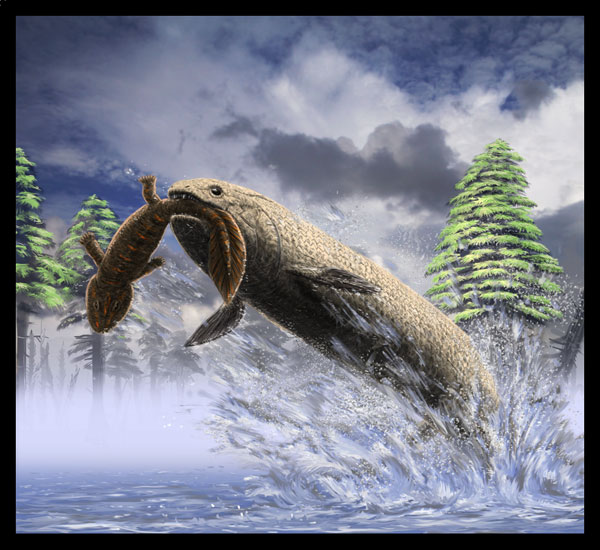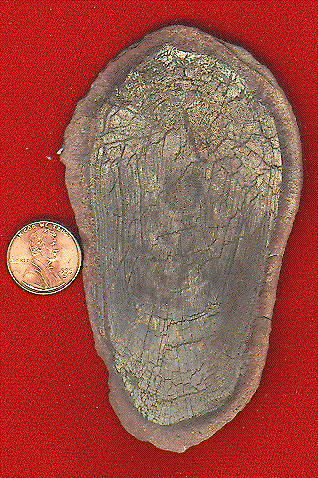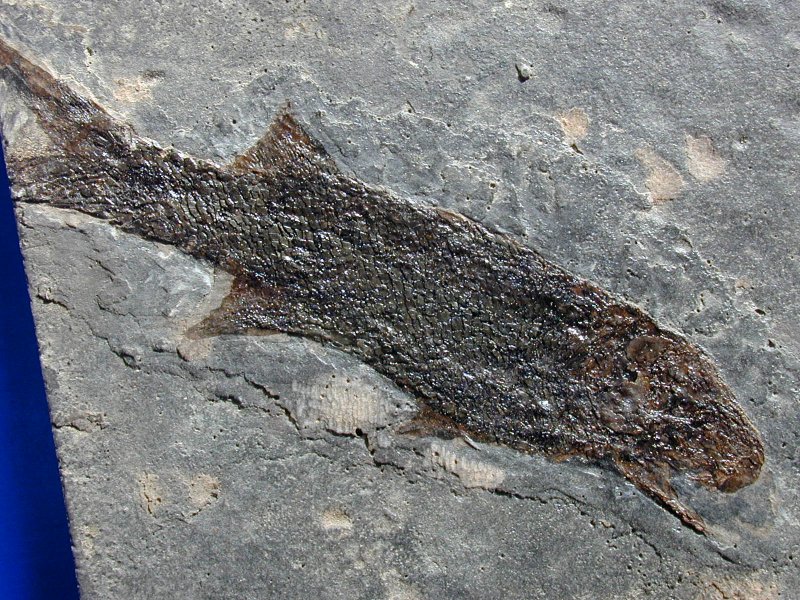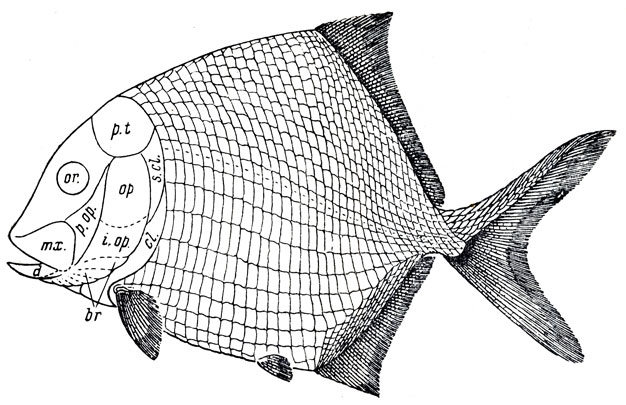[Recent Entries][Archive][Friends][User Info]
October 2nd, 2011
| October 2nd, 2011 | |
|---|---|
| 03:22 pm [industrialterro] [Link] |
Harpagofututor Harpagofututor is an extinct genus of cartilaginous fish from the Mississippian of North America. It was an eel-shaped fish with almost no scales. About eight inches long, it swam with some help from its fins, but also relied on whole-body locomotion to move. The fish also had teeth sufficient for eating shellfish. Harpagofututor is thought to be related to the cochliodonts, chimaeroids, and Chondrenchelys problematica. The fish was discovered in the 1980s in Montana's Bear Gulch area by Adelphi University palaeontologist Richard Lund, who has been exploring the limestone formations of the region since 1969. The area was thought to be the location of a shallow bay. Fish remains are found throughout the area. Further examinations of the soft tissue pigments of these fossilized remains led to more information about the fish and information about its internal organs, including its reproductive system.
Tags: Вымершие рыбы, Карбон, Хрящевые |
| Time | Event |
| 03:29 pm [industrialterro] [Link] |
Iniopteryx Iniopteryx ("Nape Wing") is an extinct genus of cartilaginous fish. It is from the Pennsylvanian epoch of the Carboniferous period, approximately 300 million years ago. Their fossils have been found in North America, primarily in two states: Ohio and Montana. In general, very little is known about this species. Iniopteryx was a plump, small-sized chimaera-like fish. It is known that the species average size was around half a meter long in length. While the species had specialized spines and fins similar to that of a flying fish. It is possible that it could glide through the air just like them. However, it is accepted by Scientists and Paleontologists that Iniopteryx was indeed a fish that was the bottom-dwelling kind.
Tags: Вымершие рыбы, Карбон, Хрящевые |
| Time | Event |
| 03:40 pm [industrialterro] [Link] |
Orthacanthus Orthacanthus is an extinct genus of fresh-water shark from a family of prehistoric sharks known as Xenacanths. Members of the genus had a long spine growing from the back of their skull and a very long dorsal fin, which ran all along its back giving it an eel-like appearance. About 260 million years ago, Orthacanthus was the terror of freshwater swamps and bayous in Europe and North America. Its body reached nearly 10 feet (3 meters) in length and its powerful jaws were lined with double-fanged teeth. They first appeared almost 400 million years ago in the Devonian, and became extinct just before the Mesozoic, about 225 million years ago. Orthacanthus достигал 4,5 метра в длину.
Ископаемые останки (1, 2, 3, 4, 5, 6):
Tags: Вымершие рыбы, Карбон, Хрящевые |
| Time | Event |
| 04:00 pm [industrialterro] [Link] |
Sphenacanthus Sphenacanthus is an extinct genus of shark which lived in the Early Carboniferous of Scotland. It may also look like a big fish, but it is really a shark. It lived about 359 million years ago. It was one of the first sharks to ever live. But it was not the first shark. Sphenacanthus also hunted fish that lived in the carboniferous. Because water creatures were the only living life forms on Earth. Sphenacathus was a freshwater shark. Sphenacanthus had a fish like body with 7 fins, 2 on the top and 5 on the bottom. No one knows how big they could get but they were rather large. Sphenacanthus' home was probably what now is known as Scotland. It shared its freshwater home with lots of other sharks, like 'Xenacantus'. This was also a freshwater shark. But it was only about a meter long.
Tags: Вымершие рыбы, Карбон, Хрящевые |
| Time | Event |
| 04:10 pm [industrialterro] [Link] |
Symmorium Symmorium is an extinct genus of stethacanthid shark. Symmorium is very similar in size and appearance to Stethacanthus, but is missing the spine with brush on its back. Some scientists think that Symmorium is actually a female Stethacanthus, while other scientists think Symmorium is a different group of shark, separate from Stethacanthus.
Ископаемые останки (1, 2, 3, 4):
Tags: Вымершие рыбы, Карбон, Хрящевые |
| Time | Event |
| 04:21 pm [industrialterro] [Link] |
Tristychius Tristychius is an extinct genus of shark from the Carboniferous period. Fossils have been found in Scotland. Tristychius was a small shark, about 60 centimetres (2 ft) long. It had a well-developed upturned caudal fin, similar to that of many modern sharks. Physically it may have resembled a modern dogfish. Tristychius also had spikes attached to the bases of its dorsal fins, probably for protection against predators.
Tags: Вымершие рыбы, Карбон, Хрящевые |
| Time | Event |
| 04:30 pm [industrialterro] [Link] |
Rhizodus Rhizodus is an extinct genus of a rhizodont, a branch of the Sarcopterygii, the bony vertebrate clade that also includes tetrapods. Rhizodus hibberti! Считают , что это крупнейшея пресноводная рыба с зубами как у Тирекса. Найдена в Шотландии, находке 300млн лет, она могла весить до 2 тонн. Been hunting Coal-Age predators in Scotland. My oh my! I've been in the UK for two weeks - sorry for not keeping up with any new updates. I really have to start investing in some serious internet time or wireless when I'm on the road, otherwise the content of this site (and consequently the visitors) tapers off rather quickly! So, here's what's been up:
7 - 8 метров в длину, однако. Не хрен собачий:
Ископаемые останки (1, 2, 3, 4, 5, 6):
Tags: Вымершие рыбы, Карбон, Лопастепёрые |
| Time | Event |
| 05:04 pm [industrialterro] [Link] |
Paramblypterus Paramblypterus is an extinct genus of prehistoric bony fish. This is a very well-preserved example of a Paleoniscoid fish known as Paramblypterus. The paleoniscoids were the first ray-finned fish, a feature readily seen here. Some 40 or more families appeared during the Carboniferous and Permian Periods. This genus went extinct during the Lower Permian. Notice the details in the rhombic scales and the heterocercal caudal fin. Specimens are no longer being quarried from the region, so acquisition from older collections such as this one are the only way to add a fine example such as this to your collection.
Ископаемые останки (1, 2, 3, 4, 5):
Tags: Вымершие рыбы, Карбон, Лучепёрые |
| Time | Event |
| 05:16 pm [industrialterro] [Link] |
Platysomus Platysomus is an extinct genus of ray-finned fish that lived in the Carboniferous and Permian periods. Fossils have been found worldwide. Platysomus was about 18 centimetres (7.1 in) long, and shaped similarly to the discus fish, having the same flattened body and alongated dorsal and anal fins. Its jaws were placed vertically under the braincase, giving it a wide gape. Platysomus is thought to have fed on plankton, and lived in both fresh and salt water.
Ископаемые останки (1, 2, 3, 4):
Tags: Вымершие рыбы, Карбон, Лучепёрые |
| Previous Day | 2011/10/02 [Archive] |
Next Day |



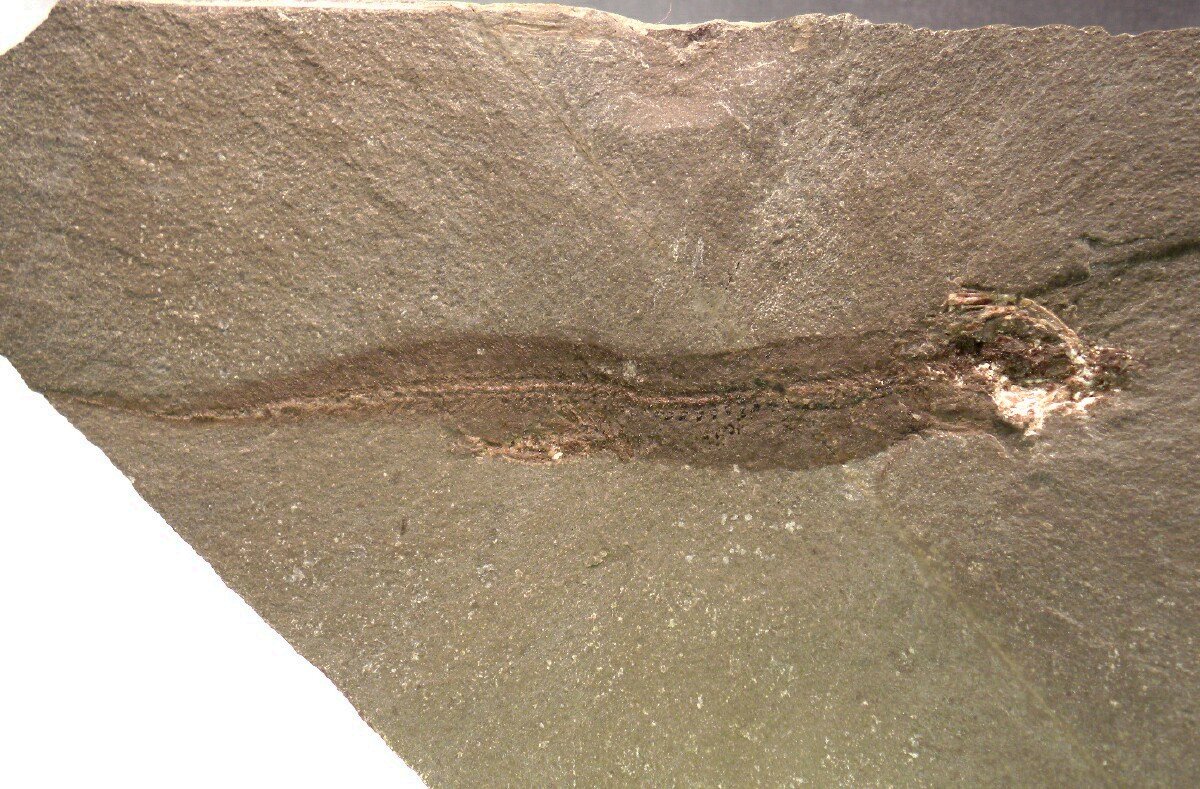





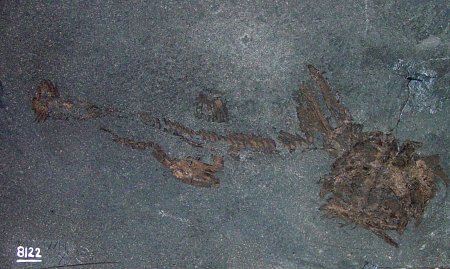
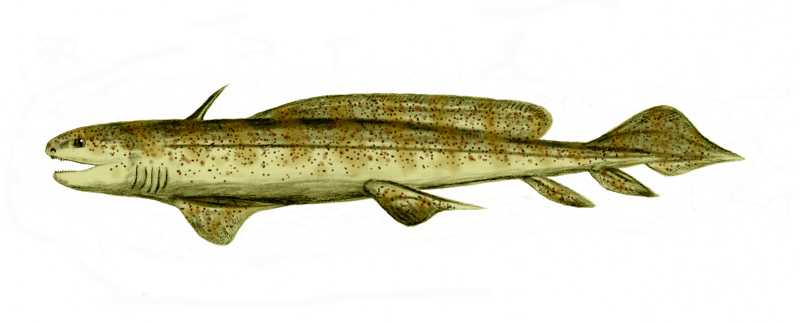


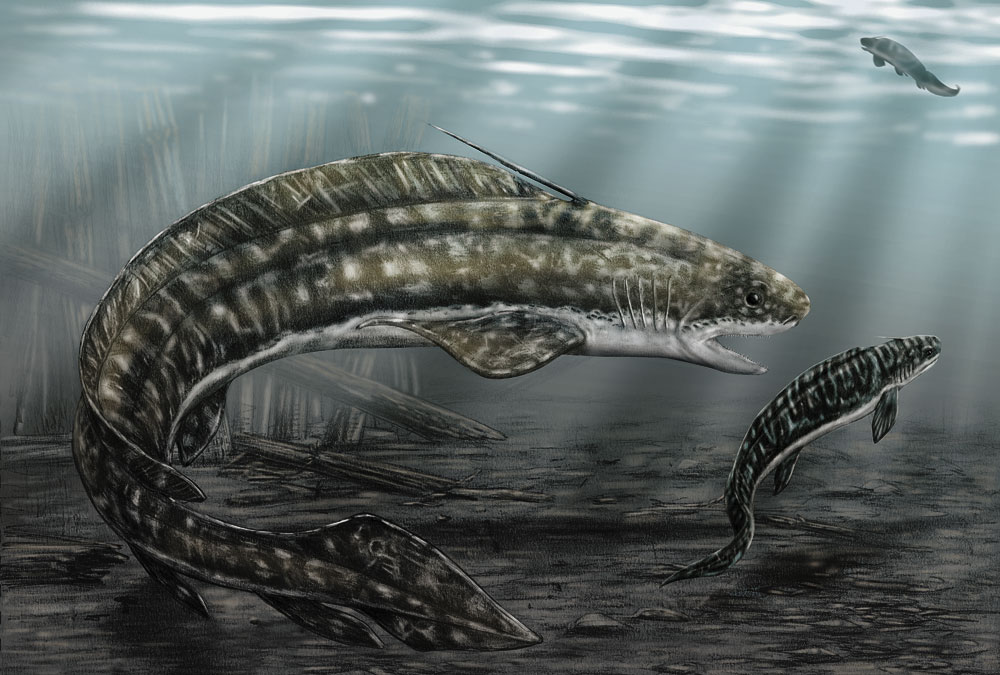
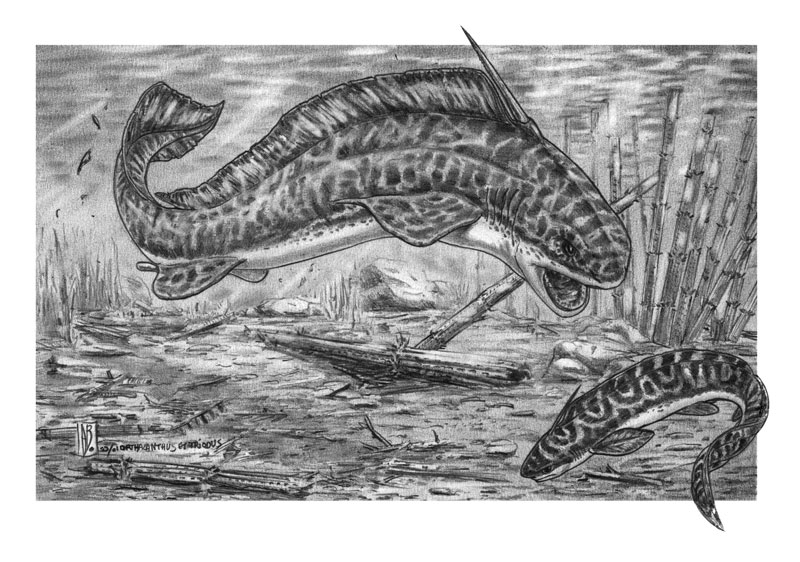







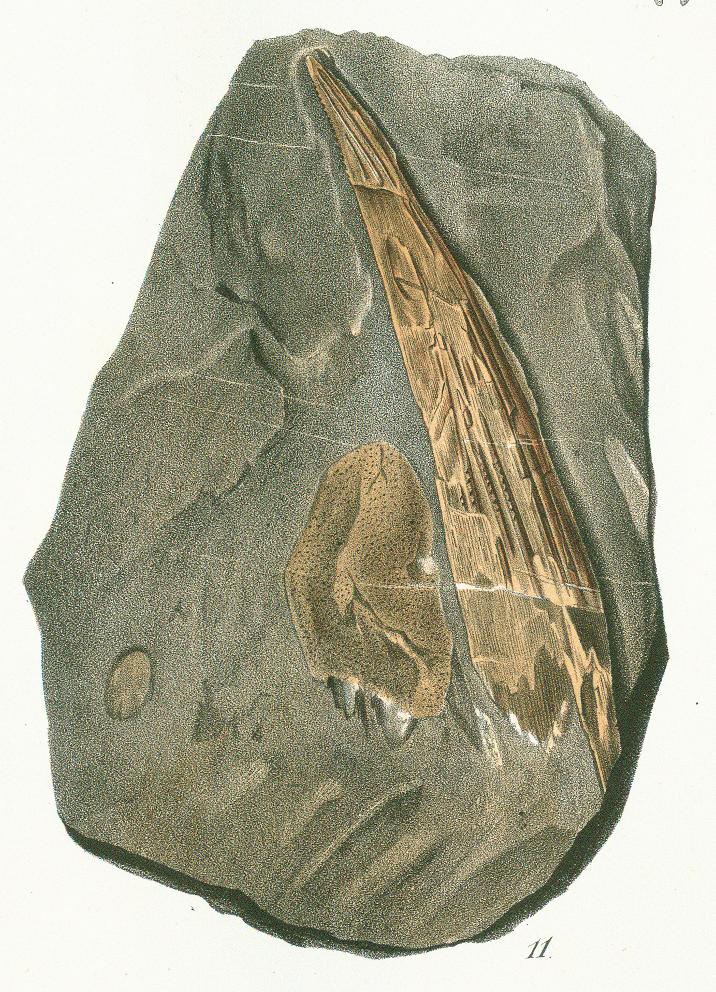


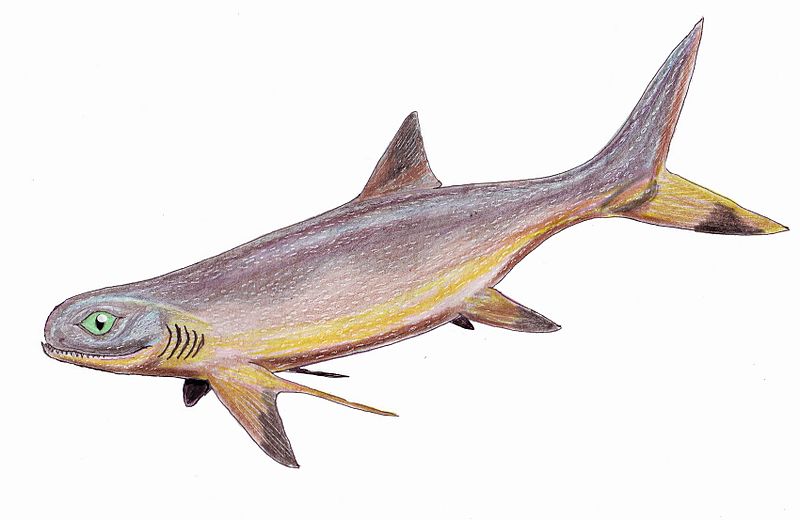



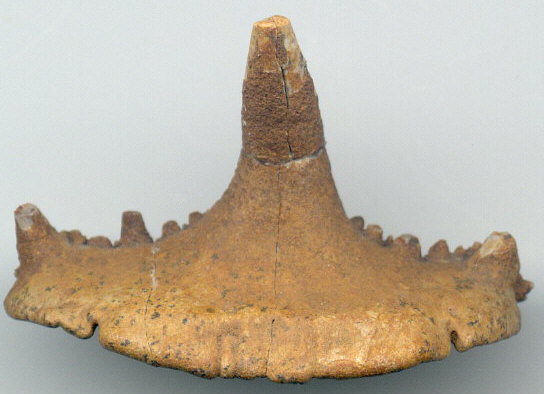
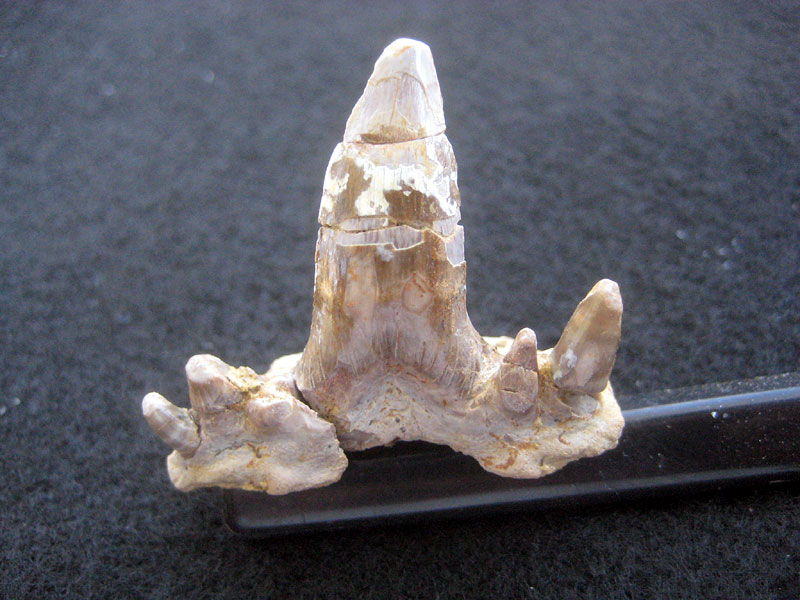




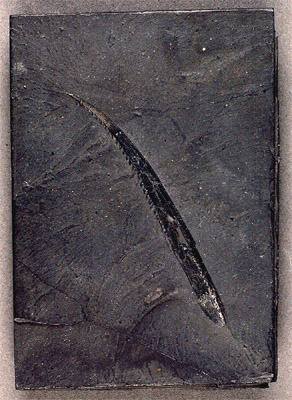


/Rhizodus_1.jpg)
